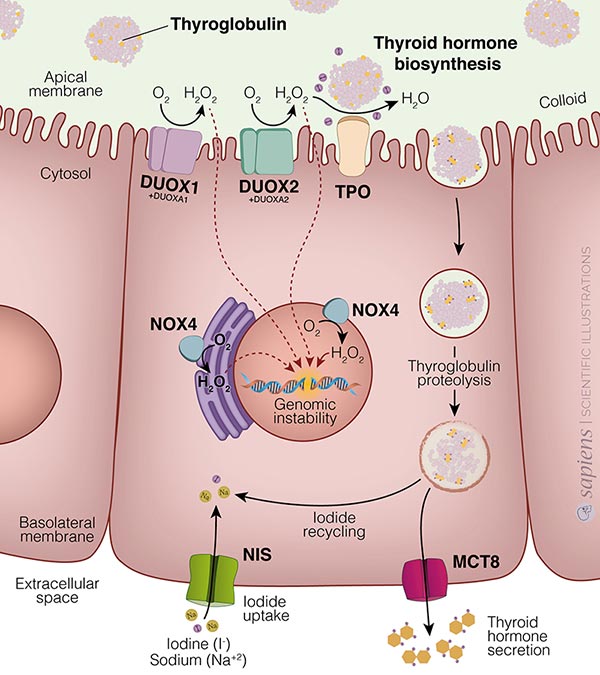Group ROS and Radiocarcinogenesis
This group belongs to the Recombination, Repair, ROS and Cancer group
Despite much progress in order to improve the benefit/risk ratio, the radiation causes many side effects. One consequence of side effects is an increased risk of initiation
of new cancers such as thyroid cancer and the development of fibrosis. Basically, late effects of ionising radiation involve reactive oxygen species (ROS). In cells, ROS are specifically produced by NADPH oxidases (NOX/DUOX). The thyroid expresses three of them.
By producing ROS, the NADPH oxidases are suspected to be involved in genetic instability as well as in fibrogenesis process. With cellular and animal models and state-of-the-art technology, this research group objective is to dissect the molecular and mechanistic events from postirradiation (IR)-induced ROS generation to genomic instability and radiocarcinogenesis as well as to fibrosis.
During the last five years we developed transversal studies focused on thyroid oncogenesis and therapeutics, encompassing basic research (Corinne Dupuy), translational and clinical research (Martin Schlumberger, PU-PH, Director of the School of Cancer).

Fig : NADPH oxydases role in radiocarcinogenesis
THe NADPH oxydases, discovered in the early 2000's, are membranous proteins with a high controlled ROS production. The thyroid expresses three of this NADPH oxydases :
- DUOX1 which role is unknown
- DUOX2, cloned by our group, which provides the H2O2, necessary to the TPO for the thyroid hormones biosynthesis
- NOX4
By producing the H2O2, the DUOX1 and DUOX2 NADPH oxydases, actives at the thyrocyte apical plasmic membrane ans NOX4, expressed at various cells compartments membrane (endoplasmic reticulum, nuclear, mitochondria...), are suspected to be involved in thyroid radio carcinogenesis and tumorigenesis.
